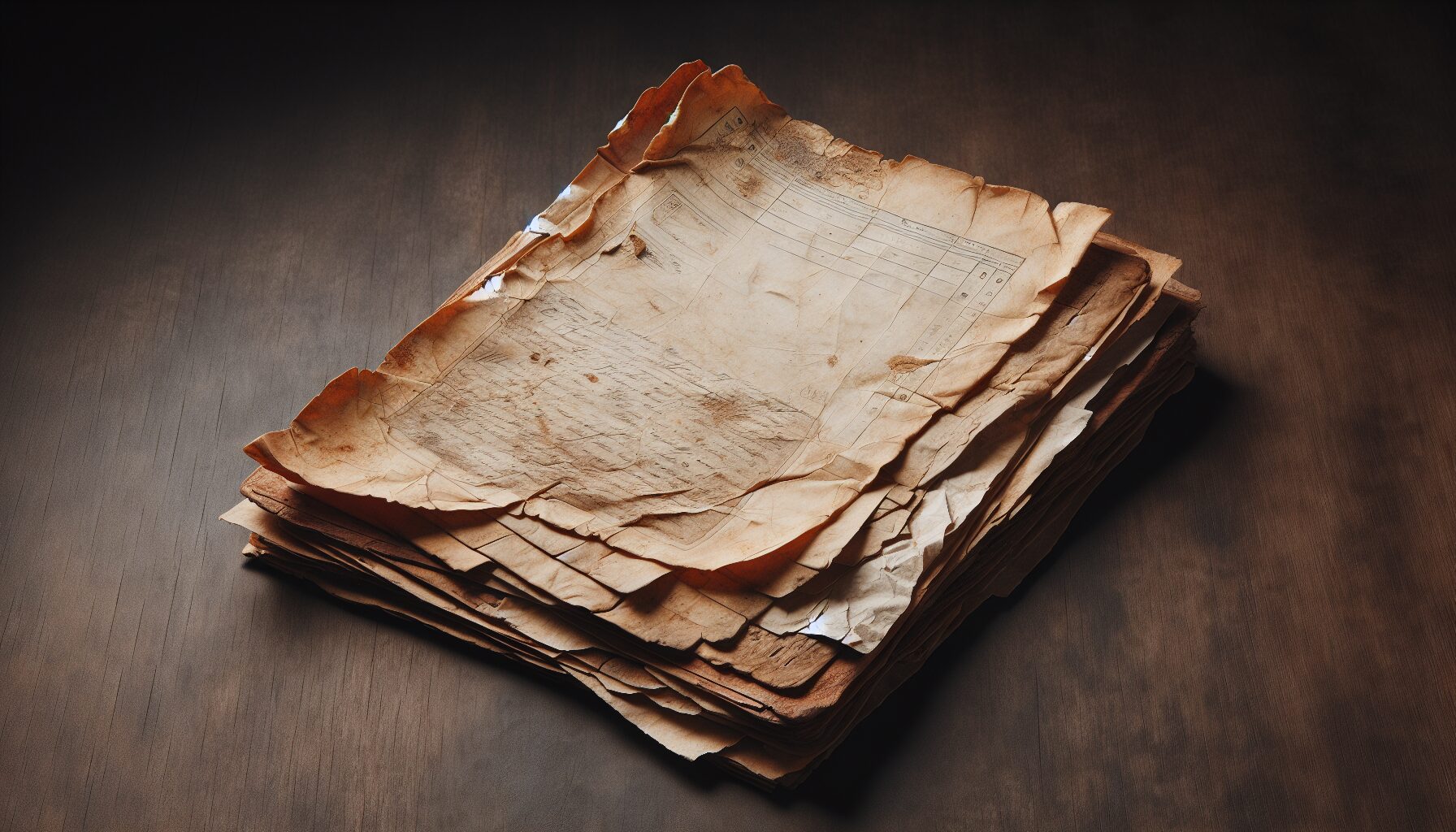The Paper Relic: Creating Tangible Memory
In a rapidly digitalizing world where almost everything from photographs to correspondence exists in some ethereal form, the significance of physicality sometimes seems to diminish. Yet, there remains an ineffable charm in tangible memories—a charm best epitomized by the paper relic. From letters yellowed by time to notebooks filled with thoughts, the paper relic stands as a testament to enduring memories.
The Historical Context of Paper
The invention of paper marked a pivotal turning point in human history. As aptly put by Tsien Tsuen-Hsuin in A History of Paper, “Paper is an invention of the first consequence for the spread of human culture and dissemination of information” (Tsien, 1980).
Paper originated in China around 105 AD, attributed to Cai Lun. This remarkable invention facilitated the documentation and dissemination of ideas, becoming fundamental to historical documentation, culture, and education. The transition from oral traditions and stone carvings to manual scripts and printed books revolutionized how history was preserved and shared.
Personal Memories Imprinted on Paper
One integral aspect of a paper relic is its personal nature. Handwritten letters or journals often carry a sense of intimacy, providing a reflection of an individual’s life and emotion. These documents serve not only as a personal outlet for expressions but also as historical artifacts of personal experiences.
Journals and Diaries: These personal records offer a window to the diarist’s soul. The musings of Anne Frank, recorded in her renowned diary, continue to resonate and educate. Her diary, originally penned on paper, tells an enduring story of resilience amidst turmoil.
- The tangibility of a diary acts as a bridge, connecting the reader with the writer across time.
- It serves as an introspective canvas where thoughts transform into words.
Letters: A Romance with Pen and Paper
Letters have forever been harbingers of personal and historical narratives. Whether it’s the richly descriptive letters of Vincent van Gogh to his brother Theo or the poignant wartime correspondences between loved ones, letters encapsulate profound connections and cultural exchanges.
“Letters are among the most significant memorial a person can leave behind them” (Johann Wolfgang von Goethe).
The tactile interaction with paper—the effort of shaping words, the dry imprint of ink—renders each letter unique. Today, the revival of the art of letter writing is observed among a new generation seeking a deeper connection than what digital text may offer.
The Craft of Scrapbooking
Scrapbooking represents the artistic assembly of paper relics. This activity transforms collections of photos, letters, and mementos into personalized books recounting cherished memories. Originating in the 15th century, this hobby has evolved to reflect the creativity of its pursuers.
Significance of Scrapbooks:
- They are catalysts for nostalgia, providing a tactile means to revisit moments with sentimental value.
- Scrapbooks act as handcrafted stories, connected by thematic embellishments and the creativity of the scrapbooker.
The Resurgence of Analog Media
In an era dominated by smartphones and digital cameras, there is a perceptible renaissance of analog media, including film photography and typewritten notes. The inherent unpredictability of film, with its grain and texture, provides a richer canvas for memories to reside.
This rebuttal to the excesses of digital life is mirrored in the growing popularity of typewriters for writing personal notes. The clickety-clack of a typewriter is as much an auditory memory as it is visual, adding another dimension to the recollection process.
The Psychological Impact of Tangibility
Psychologists assert that tangible objects enhance cognitive memory by creating multi-sensory experiences. The journal of Sage Publications discusses how physical and emotional engagement with materials like paper can improve recall and invoke stronger emotions.
“The physical act of writing something down appears to leave a deeper imprint on the memory,” says Amy Knapp, a psychologist specializing in memory and cognition.
Conclusion
The resonance of the paper relic lies in its capacity to anchor memories in the real world. It *bridges* capricious memory and materiality, allowing experiences to be relived in their original form—perceptible, immediate, and enduring. As we move further into the digital age, the allure of the paper relic grows stronger, reminding us that sometimes, permanence can be gently folded within a simple piece of paper.
The paper relic is more than just a keepsake; it is history, memory, and identity tightly rolled into one potent artifact, creating an indelible impact that technologies like artificial intelligence or digital storage can scarcely replicate. Whether through cherished letters, intimate journals, or creatively arranged scrapbooks, paper relics weave stories of past, present, and future with every fiber of their being.

Comments